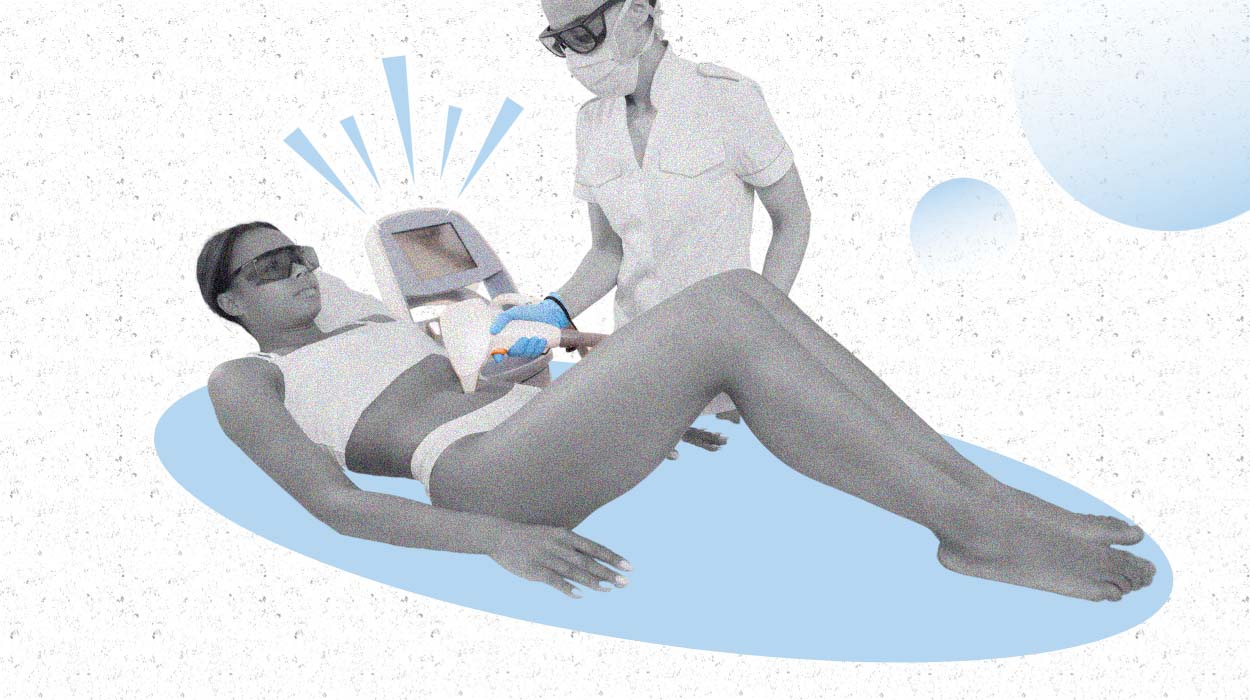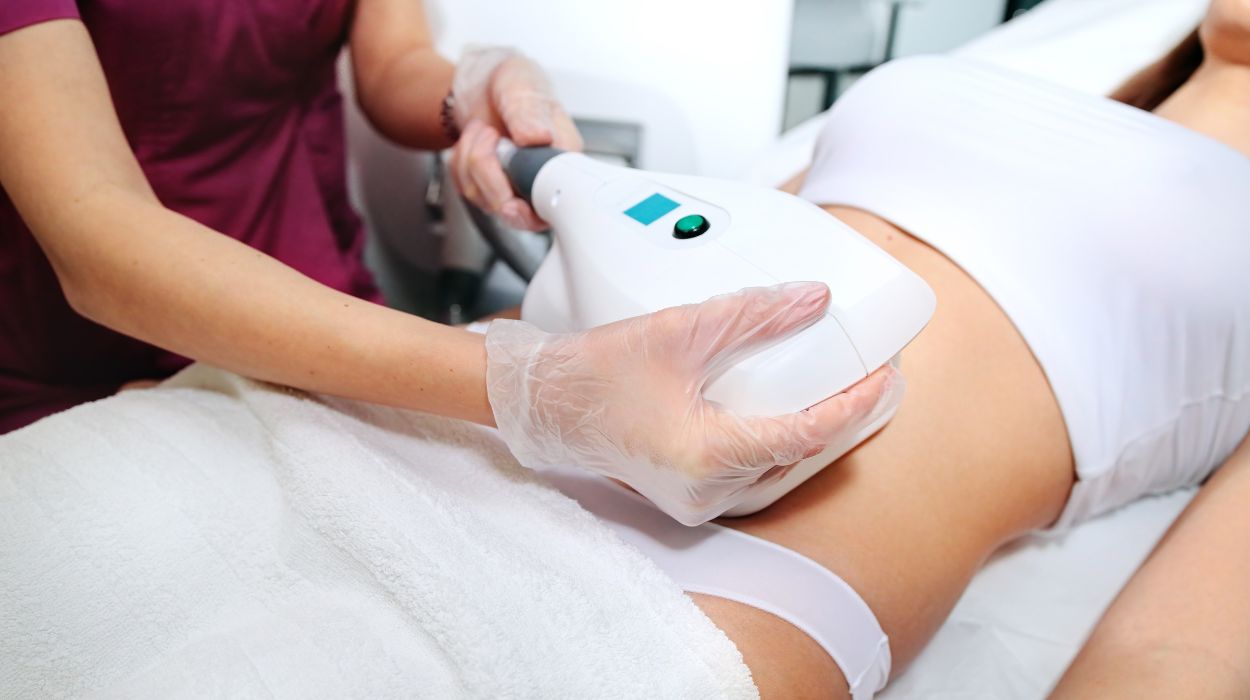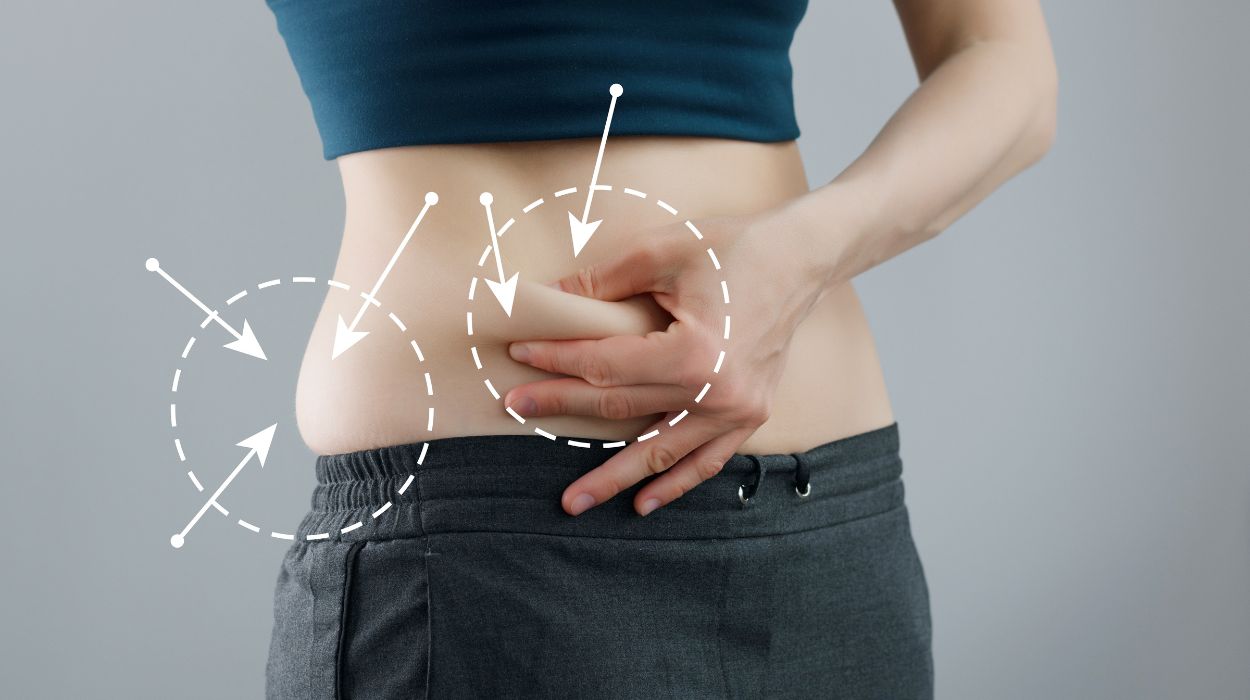 Expert's opinion
Expert's opinion
Expert's opinion
The article is a subjective view on this topic written by writers specializing in medical writing.
It may reflect on a personal journey surrounding struggles with an illness or medical condition, involve product comparisons, diet considerations, or other health-related opinions.
Although the view is entirely that of the writer, it is based on academic experiences and scientific research they have conducted; it is fact-checked by a team of degreed medical experts, and validated by sources attached to the article.
The numbers in parenthesis (1,2,3) will take you to clickable links to related scientific papers.
How Many Pounds Can You Lose With CoolSculpting? 2024 Answer

If you have tried countless diets and exercise regimens, yet your unwanted fat rolls refuse to disappear, you are not alone. CoolSculpting is a fairly new procedure that can help you eliminate stubborn fat that defies diet and exercise.
Consider getting close to your weight goals before you try CoolSculpting for the best results. If you are still far from your ideal weight, consider including CBD oil in your weight loss routine. Many CBD proponents say that the compound can help you lose weight.
How Many Pounds Can You Lose With CoolSculpting?
CoolSculpting may help you achieve your body goals if you have reached your goal weight or are only about 30 pounds away.
Everyone responds differently to CoolSculpting, so don’t expect to receive the same results as everyone else. The outcome of your procedure may be influenced by your present weight.
How Much Weight Can You Lose With CoolSculpting?

Like any fat removal treatment, CoolSculpting can help you lose about 20 to 25 percent[1] of the fat cells in your desired area. You might not notice any change in the numbers on your scale but you could see changes in your appearance. It offers you a non-invasive body contouring procedure to get rid of stubborn fat.
The sensitivity of fat cells to cold temperatures for the science behind the effectiveness of CoolSculpting.
Everyone has different results from CoolSculpting so, do not expect to get the same results as anyone else. Your current weight can affect the outcome of your procedure.
If you have excess fat or you are far from your ideal weight, you might not notice drastic changes from your weight loss treatment. Therefore, you might need multiple sessions to observe significant fat reduction.
If you have hit your goal weight or are only about 30 pounds away, CoolSculpting might help you achieve your body goals. A few sessions later, you should begin to see your tummy rolls and bra bump melting away.
How Does CoolSculpting Work?
Unlike plastic surgery, CoolSculpting does not require any incision for fat removal. The process is only mildly uncomfortable. Hence, you typically will not need anesthesia like you would for invasive procedures like liposuction.
CoolSculpting fat reduction treatment capitalizes on the sensitivity of fat cells to cold temperatures. The suction paddles are placed on the area of your body you desire to work on. These panels send controlled cool temperatures to specific sections of your body.
If you are worried about how your skin would react to the cold, you should not. A gel layer applied to your skin before the procedure begins protects it from damage.
For about two hours, you sit reclined allowing the blast of cold to work on your fat cells. These temperatures trigger cell death[2] in the fat cells beneath your skin.
Over several weeks, your body slowly gets rid of the dead fat cells through your lymphatic system. This elimination process is why you will wait to see your CoolSculpting results.
If you are getting CoolSculpting to look perfect for a wedding or some big event, you need to consider this waiting period.
Depending on your body’s response, you should begin to see your results between three weeks to three months after your procedure. You can expect to see parts of your body appearing slimmer but do not expect to lose weight.
So, consider scheduling your CoolSculpting appointment several weeks or a few months ahead of your big event.
Your fat loss results from CoolSculpting are permanent as you cannot regenerate the dead fat cells. However, it does not prevent you from gaining weight. That is because if you do not stick to a healthy lifestyle, the remaining fat cells can store more fat leading to body weight gain.
Losing Weight After CoolSculpting Is Hard
If you are looking for a means of losing weight, CoolSculpting is not the solution. That is because the processes of fat loss and weight loss are different.
When you gain weight, your fat cells store more fat and increase in size. Losing weight involves using your fat stores causing your fat cells to shrink. Therefore, your total number of fat cells remains the same.
On the other hand, the process of fat loss which CoolSculpting facilitates, causes your fat cells to die, resulting in the reduction of the fat cells.
CoolSculpting might reduce up to 25 percent of your fat cells but this might not be enough to tip the scales. However, it could be enough to produce visible signs of fat loss such as slimmer arms and a thinner midsection.
Getting Ready For CoolSculpting
If you are more than 30 pounds heavier than your weight goal, you might want to work on losing weight before turning to CoolSculpting for fat loss.
The more you weigh, the less dramatic your CoolSculpting results will be. Being further off from your goal weight might also affect the number of sessions you need for visible results. If possible, aim to be within 10 pounds of your desired weight.
Sustainable weight loss should be your goal. There is no need to hop on a drastic diet right before CoolSculpting because your results might be more difficult to maintain if you do not follow up with lifestyle changes.
The combination of a healthy diet and exercise will bring you closer to your weight goals and ready for body contouring sooner than you realize.
Weight loss supplements such as CBD oil can also supplement your exercise and dieting efforts. However, you should contact your doctor before using supplements for weight loss.
You might notice that your weight loss affects various parts of your body, including your problem areas such as your arms and thighs. Body parts that you least expect might also change when you drop a few pounds and the relationship between weight loss and your feet might surprise you.
What To Do After CoolSculpting?

So, you have finished your CoolSculpting procedure, what is next?
Wait. Yes, wait.
Your CoolSculpting results will not appear immediately because your body needs time to process and eliminate dead fat cells.
You might start seeing results as early as three weeks later. If you want to see results faster, you could try massaging the treated area.
Five-minute massages, five times daily, after your procedure can help you see your results sooner.
You might want to give up foods that can slow down your lymphatic systems such as yogurt, milk, and cheese. You might also want to cut back on trans fats and foods with high added sugars.
Just because you got rid of fat cells by CoolSculpting does not mean that you can no longer gain weight. Weight gain could still occur from expanding your remaining fat cells due to increased fat storage.
Fat can be distributed to other fat cells in your body if you return to old habits. If you are already at your weight goal and happy with your CoolSculpting results, switching to a healthy lifestyle of exercise and healthy foods will help you maintain your results.
Seeing your body change after CoolSculpting could motivate you to work on losing more weight. However, it is best to do it right with healthy lifestyle changes to maintain your results long-term.
Sometimes, you might need to return to the CoolSculpting facility for more sessions if you do not have noticeable results. Your next session would need to be after the waiting period for your first session has passed.
Conclusion
CoolSculpting is an innovative non-invasive way to lose body fat. It involves exposing fat cells to cold which kills them. You could lose between 20 to 25 percent of the fat cells in the treated area. However, CoolSculpting does not help with weight loss.
Your CoolSculpting results might take a few weeks to appear and you might need routine massages and diet changes to speed up the process.
How much fat you lose depends on your body and you might need several sessions before you get your desired results. You could get better results if you are closer to your weight goal. A healthy diet and exercise can help you get to your ideal weight before your procedure and maintain your results afterward.
+ 2 sources
Health Canal avoids using tertiary references. We have strict sourcing guidelines and rely on peer-reviewed studies, academic researches from medical associations and institutions. To ensure the accuracy of articles in Health Canal, you can read more about the editorial process here
- Krueger, N., Sophia, V., Luebberding, S. and Sadick, N.S. (2014). Cryolipolysis for noninvasive body contouring: clinical efficacy and patient satisfaction. Clinical, Cosmetic and Investigational Dermatology, [online] pp.201–201. doi:https://doi.org/10.2147/ccid.s44371.
- Patrícia Froes Meyer, Marcel, R., Oliveira, G., Tavares, S., Lima, M., Camila Procópio Andrada and Gonzaga, L. (2016). Effects of Cryolipolysis on Abdominal Adiposity. Case reports in dermatological medicine, [online] 2016, pp.1–7. doi:https://doi.org/10.1155/2016/6052194.



